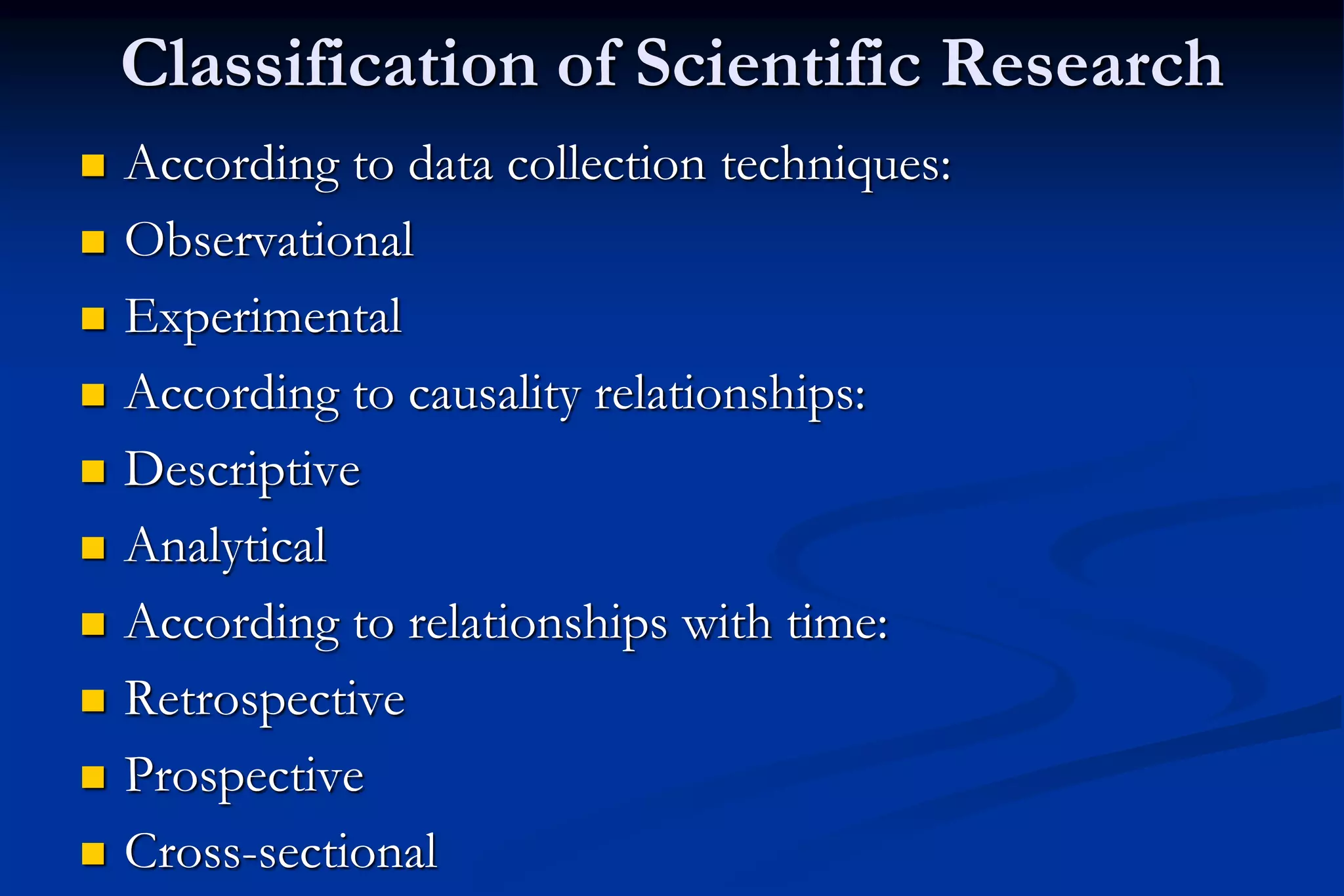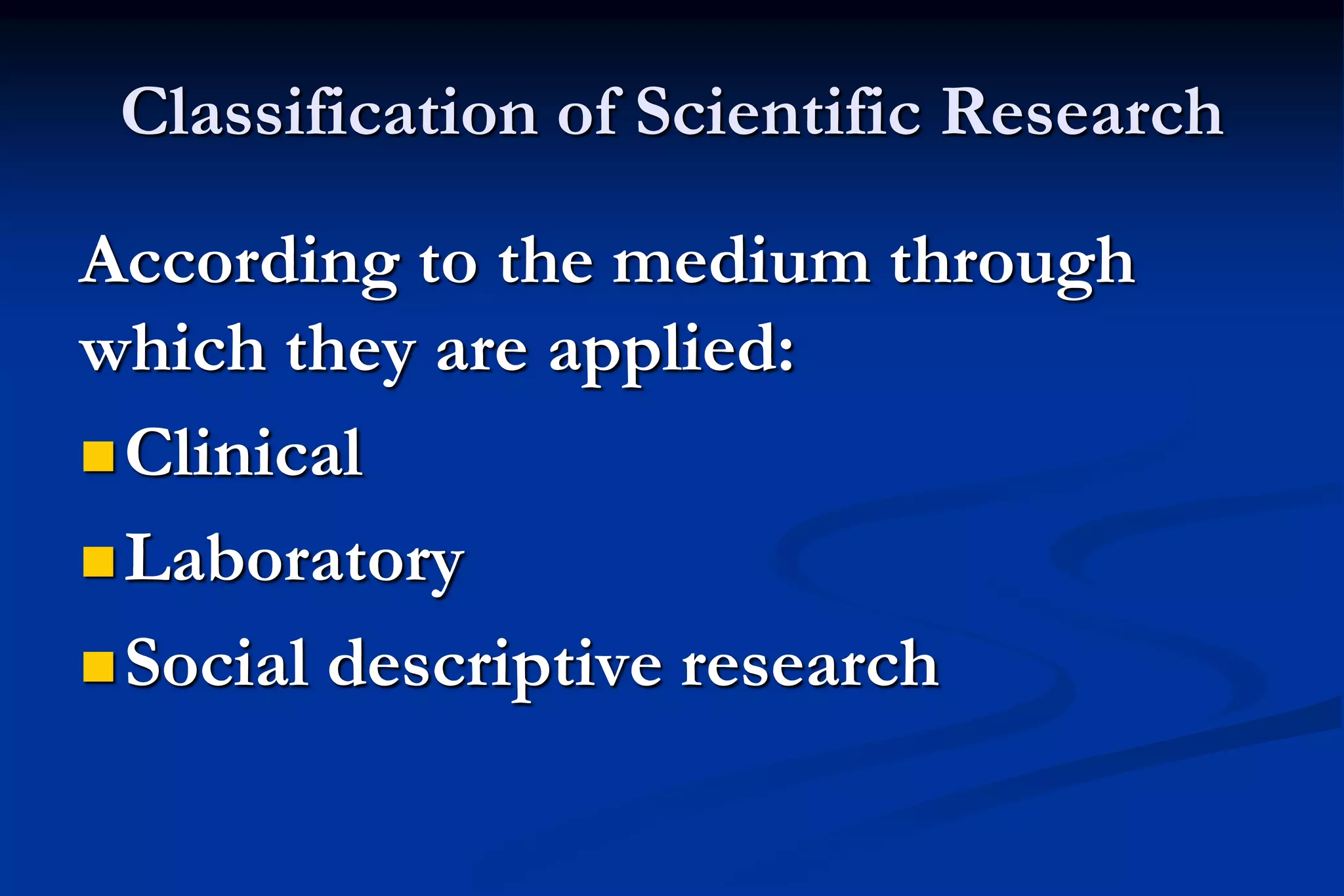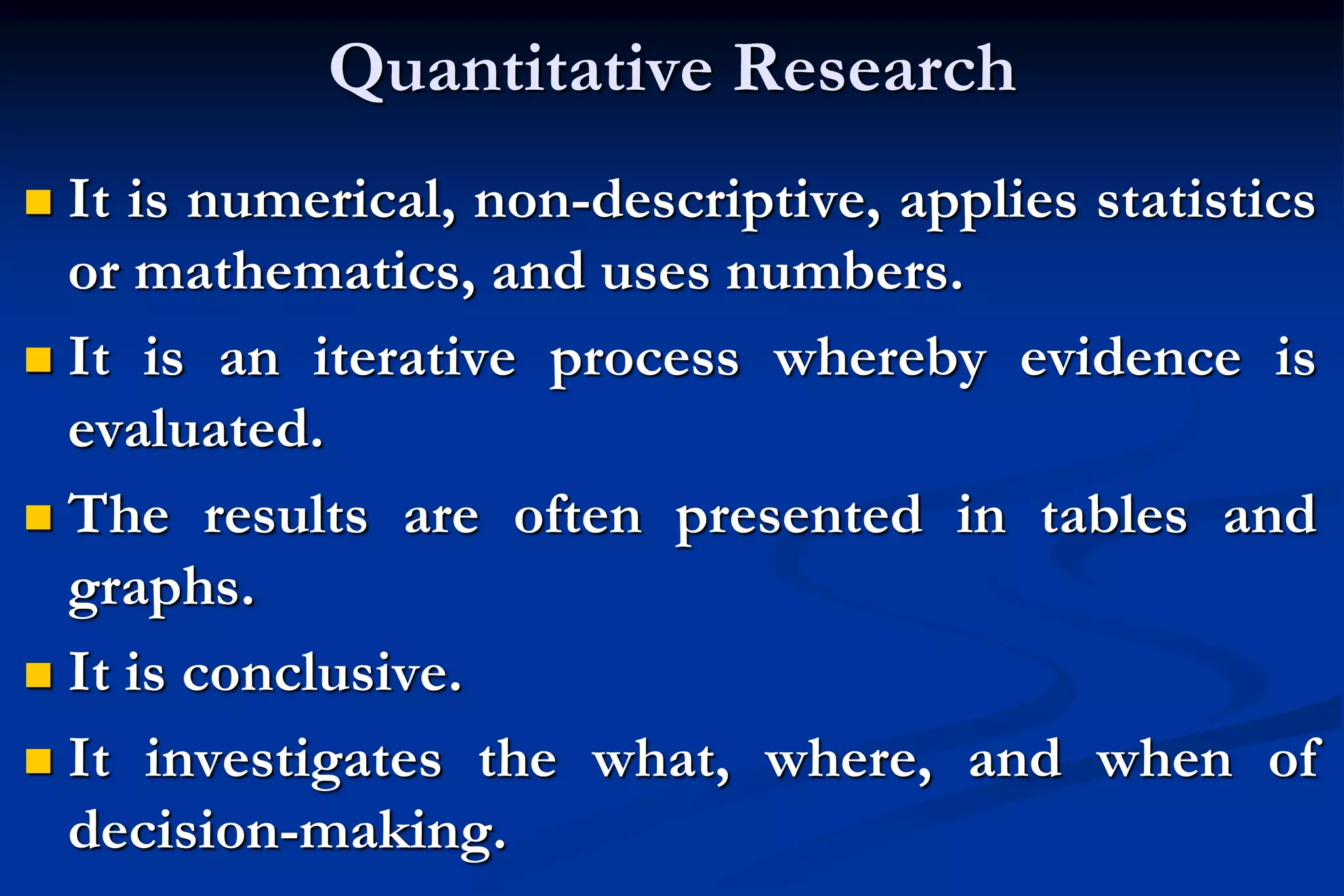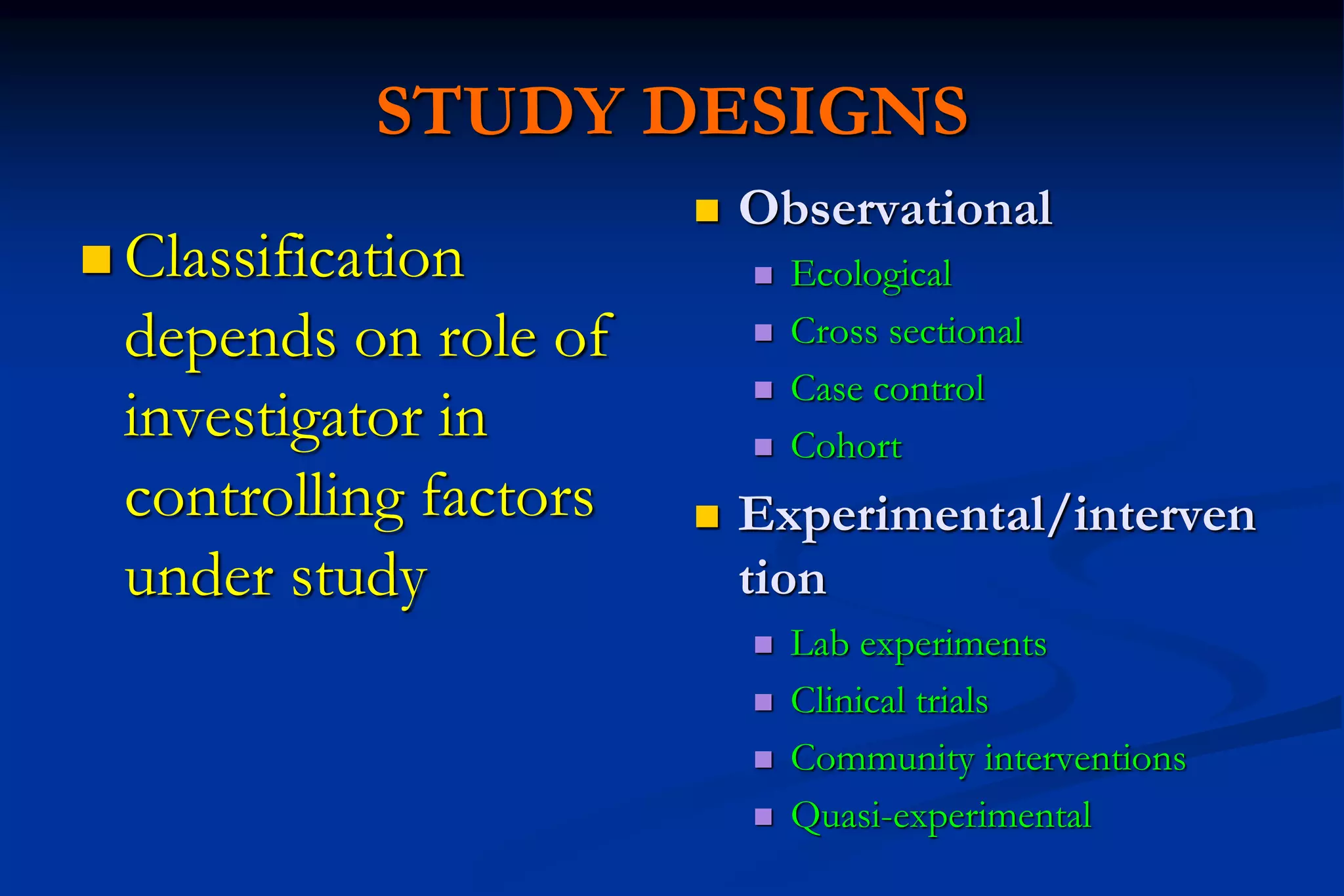The document discusses scientific research and its classification. It describes different types of research including descriptive, analytical, quantitative, qualitative research. It also discusses various study designs used in scientific research like observational studies, experimental studies, and clinical trials. Key factors in selecting appropriate research designs are discussed. Overall, the document provides an overview of conducting systematic scientific research.














































































